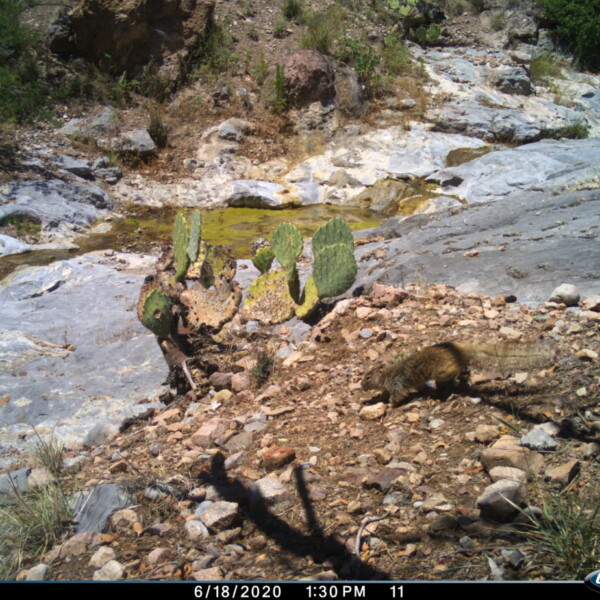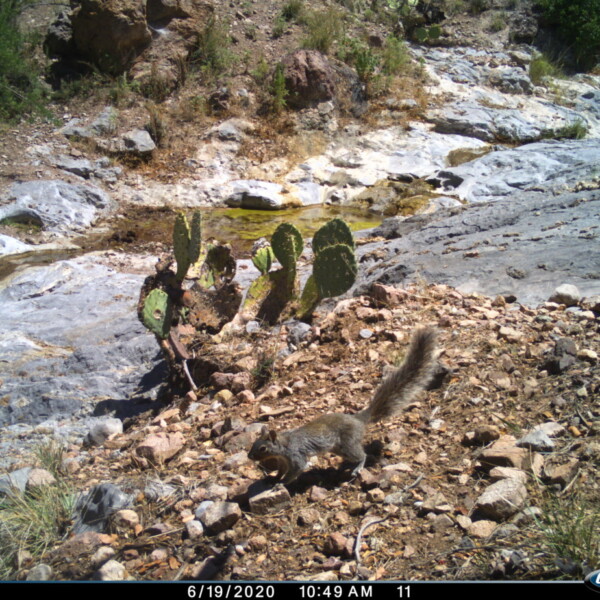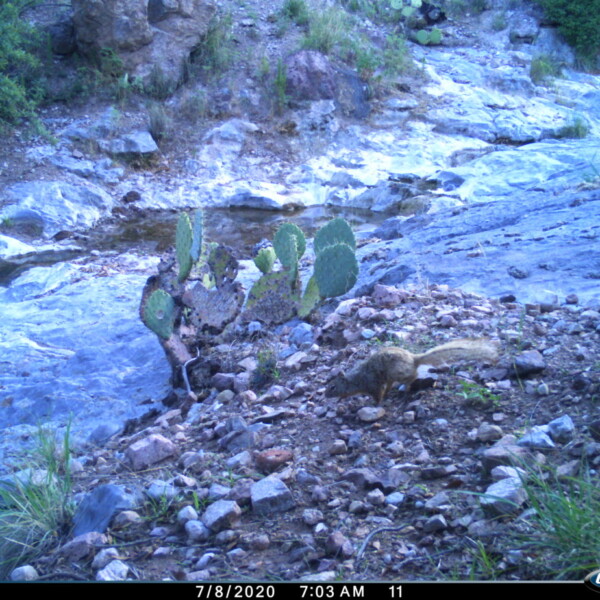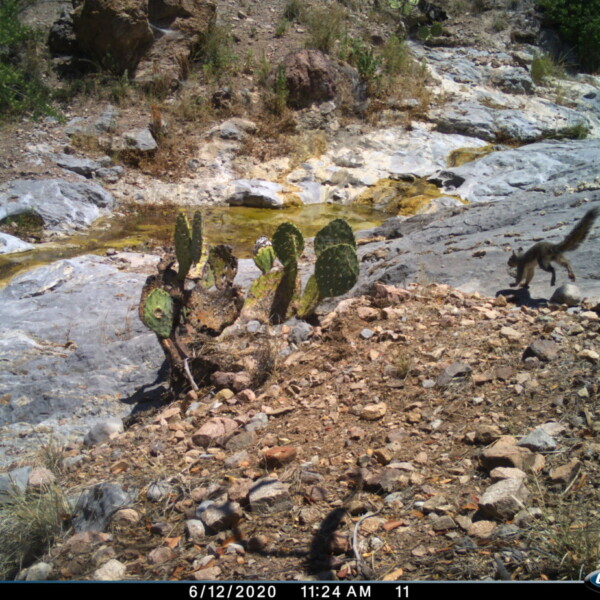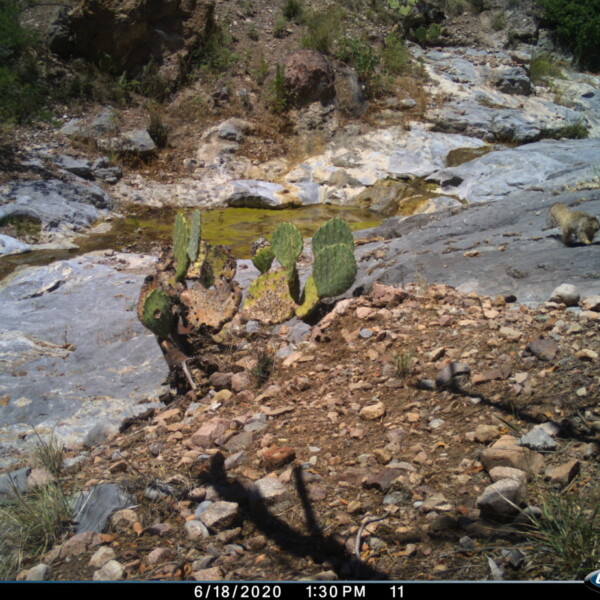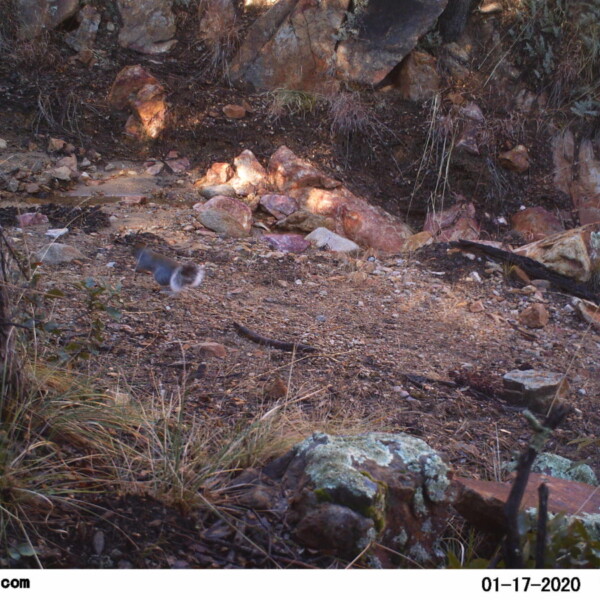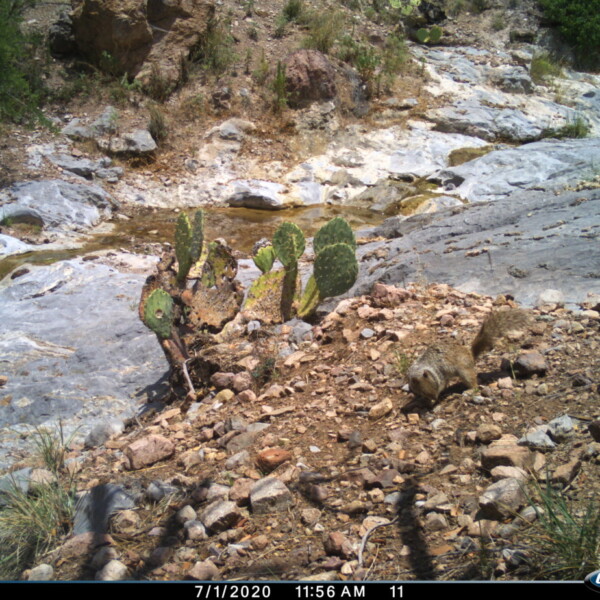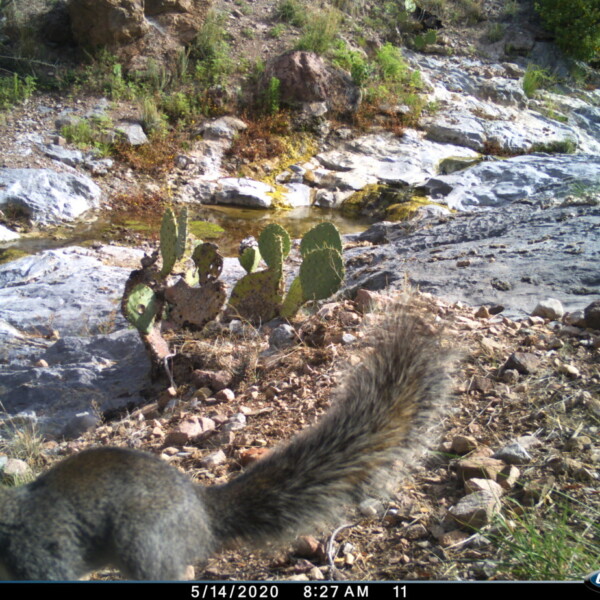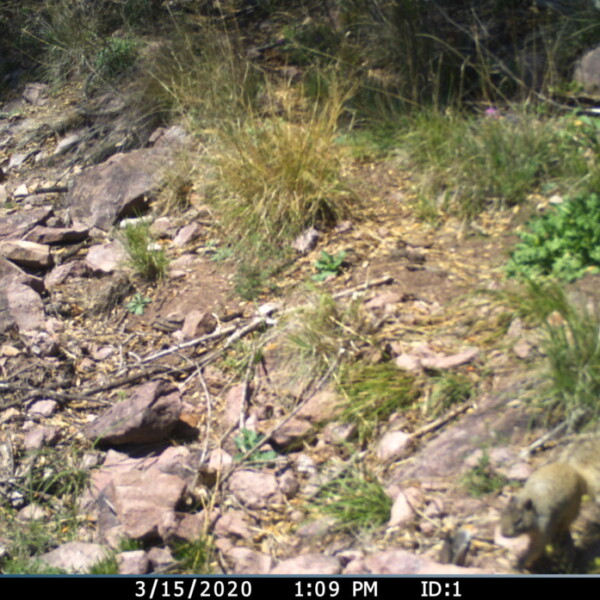Many squirrel species are native to the Sky Island region and appear on our wildlife cameras. The two we see most often are the rock squirrel (Otospermophilus variegatus) and the Arizona gray squirrel (Sciurus arizonensis)—these two species can look very similar, but once you know what to look for, you’ll be squirreling in no time.
Arizona gray squirrel (Sciurus arizonensis)
The Arizona gray squirrel is quite special in this region and is only found in the deciduous woodlands and riparian corridors of the Southwest United States and Northern Mexico. It is a tree squirrel and relies on the native sycamores, walnuts, and oaks for food and shelter. They are considered tree squirrels because they make their nests in trees and use strong limbs and long tails to help them balance in the treetops. In the United States, the Arizona gray squirrel has been considered for federal listing as threatened or endangered, but insufficient population data has prevented official special status so far. They are officially considered a threatened species in Mexico. The main threats to the Arizona gray squirrel are from competition with the invasive Abert’s squirrel and habitat loss from logging and agriculture. Because of their tenuous status, I am always very excited to see an Arizona gray squirrel while hiking and on our wildlife cameras so we can help document their presence in the Sky Islands. The Arizona gray squirrel can often look like their competitor the Abert’s squirrel, but we’ll leave that comparison for another time.
Rock squirrel (Otospermophilus variegatus)
The rock squirrel is the largest species of ground squirrel and make their dens in earthen burrows and rock crevices. However, both species are often found on the ground so don’t go off that alone! Rock squirrels are also native to the Southwest U.S. and Northern Mexico but are far less limited in their habitat preferences. Rock squirrels prefer to live anywhere there are rocky outcrops, so they are more commonly seen across the region. They’ve also made themselves at home in urban areas and are a common sight in Tucson’s parks. While not considered threatened in any way, the rock squirrel is a vital part of the ecosystem as they are important seed distributers and are a food source for many larger animals.
How to tell the difference:
Behavior
At first glance the rock squirrel may look very similar to the gray squirrel, but they give off different vibes due to their lifestyles. Rock squirrels are adapted to digging tunnels and squeezing through rocks, thusly their bodies are longer and flatter. They are often found perched on top of rocks to sunbathe and to watch for predators.
On the other hand, gray squirrels are adapted to bounding and climbing through the trees and they always look ready to spring. Gray squirrels prefer the safety of the trees and, but they forage and store food on the ground and are always moving.
Tails
Another difference I’ve noticed on our wildlife cameras, is that the two squirrels hold their tails differently. While not consistent, rock squirrels often keep their tails low and parallel to the ground while gray squirrels often hold their tail up like a banner.
Fur color
The difference in fur patterning is the biggest distinction between the species. At first glance, both are brownish gray; however, the gray squirrel lives up to its name and has more consistent gray coloring with frequent orangish-brown patches on its face and back, and a white belly. The rock squirrel is more complicated in its coloration to help them blend into the rocks. Their fur is flecked with white, black, and brown making them appear speckled like marble. Rock squirrels’s hindquarters can also have a more golden coloration depending on the time of year.
Seeing them side by side is often the best way to learn the differences in their coats. Scroll through these images our wildlife cameras have captured of both squirrels and try to see for yourself.
Being able to distinguish animals down to species takes practice and the best way to learn is to gain experience yourselves. So, next time you are out hiking in the mountains or walking in a park and see a large squirrel, try and figure out what species it is based on my tips above. But most of all, take a moment to enjoy these energetic rodents as they move about their day.



